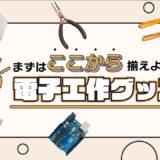YouTube
0:41 Components that control and process electricity
1:15 Components that measure the world
1:42 Parts that work
2:10 Components that perform a specific process or operation
2:32 Components that supply energy
2:53 Components that make up electronics
Types and Roles of Electronic Components


This article describes the types of electronic components and their roles.
By reading this article to the end, you will be able to understand the roles of each electronic component and gain knowledge to enjoy electronic construction more.
Role of Electronic Components
First, the types and roles of electronic components are explained.
Electronic components can be divided into six major categories based on their role.
- Components that control and process electricity
- Components that measure the world
- Parts that work
- Components that perform a specific operation or process
- Energy Source Components
- Components for electronic equipment
Electronic devices are basically designed to "observe the outside world and operate something based on that information.
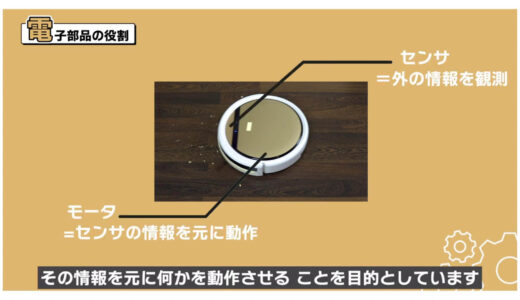
And if we break down the contents further, we find that the process is "measure something, then process and control the electricity, perform a specific operation, process and control the electricity again, and make something work.
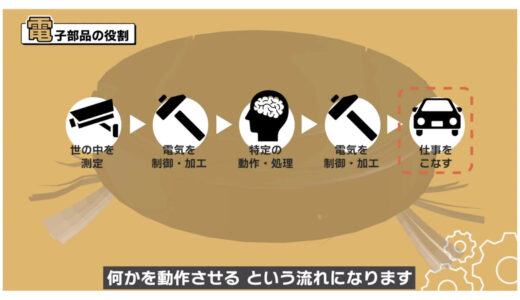
In addition to this, the energy source that serves as the heart and the components necessary to make up an electronic device are combined into one electronic device.
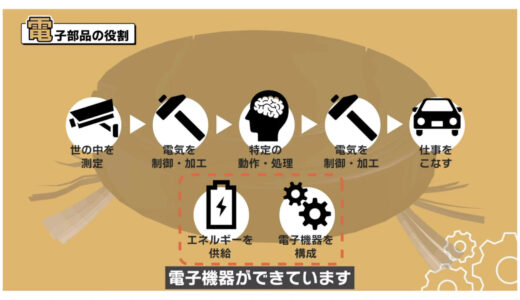
Components that control and process electricity
Let us introduce some typical components for each category.
Electricity has no benefit if it simply flows; it is only when the right amount of electricity is supplied or turned on and off that we can use it in the way we want.

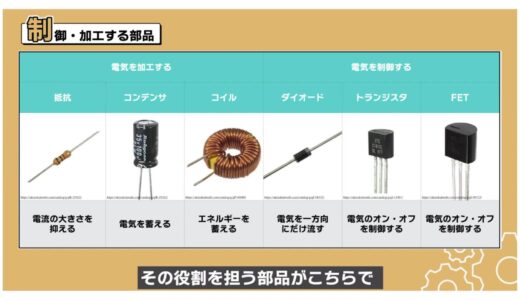
Resistors, capacitors, and coils can "process" electricity by reducing its flow or storing it.
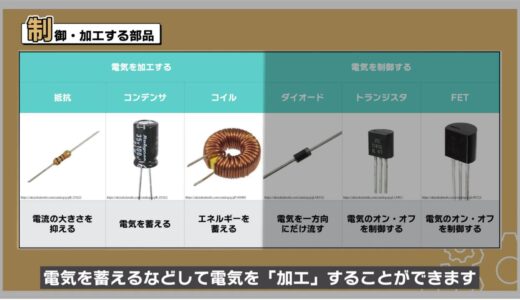
Diodes, transistors, and FETs are also components that "control" the direction of electricity flow or on/off.
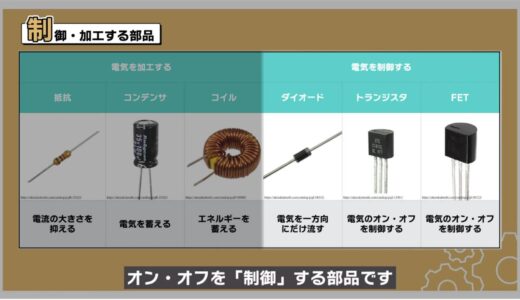
These six components are the most basic and super-important of all electronic components and will be discussed in detail in the next section.
Components that measure the world
Next is a component for "measuring something" in the world.

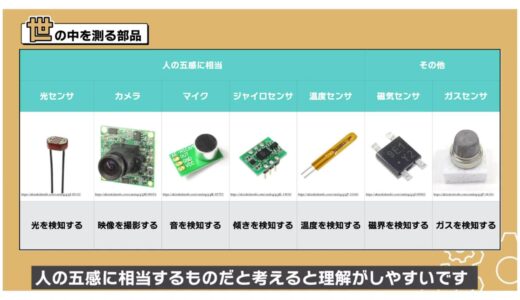
For example, an optical sensor or camera is used for the role corresponding to the eyes, and a microphone is used for the role corresponding to the ears.
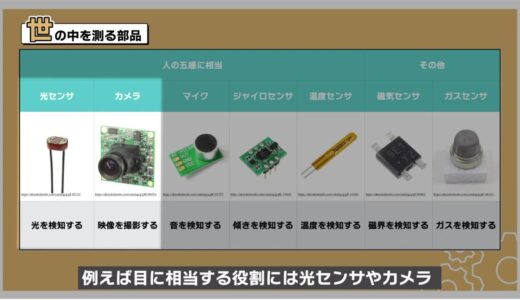 | 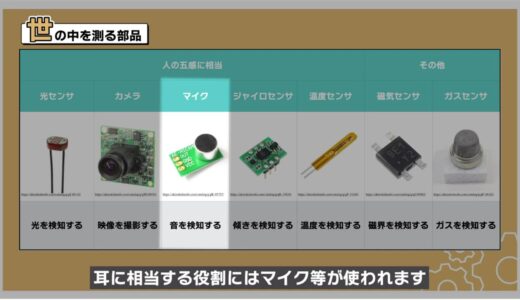 |
In addition, gyro and temperature sensors correspond to the "sense of equilibrium" and "sense of temperature" that people have.
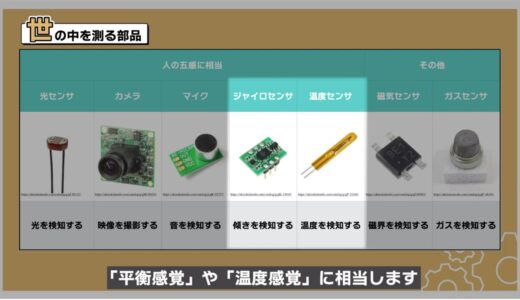
Parts that work
And there are many other sensors.
The ultimate goal of electronics is to make something work, to make a difference in the outside world - to do a job.
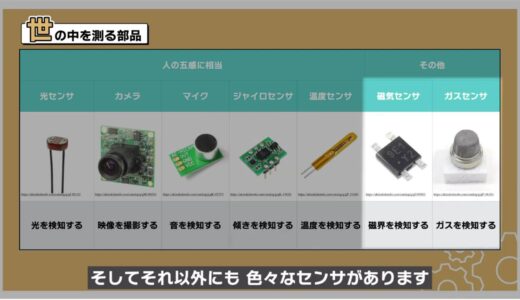
And their work can be roughly divided into four categories: "moving," "glowing," "sounding," and "other.
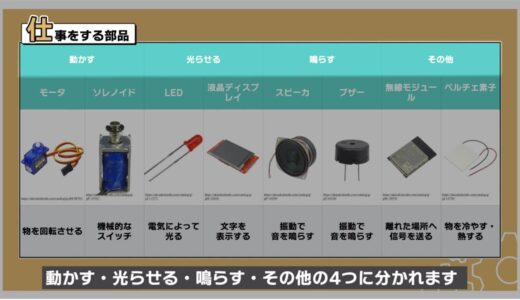
For example, parts using coils are mainly used to move objects. For example, motors are used to move objects in a rotational direction, while solenoids are used to move objects in a linear direction.
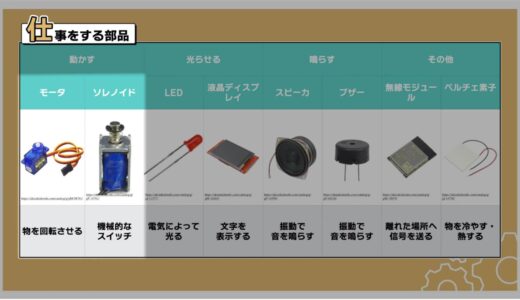
The parts used to move things in this way are called actuators.
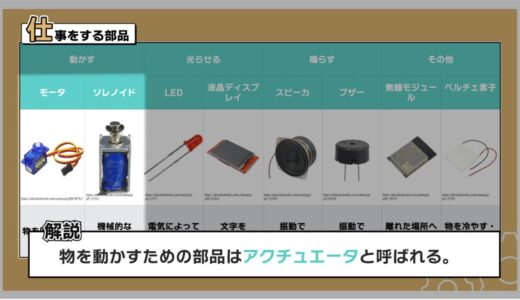
Components that perform a specific process or operation
Next is a component that performs a specific predetermined operation.
This is mainly done with components called ICs or integrated circuits, which contain multiple elements and functions embedded in a small chip.
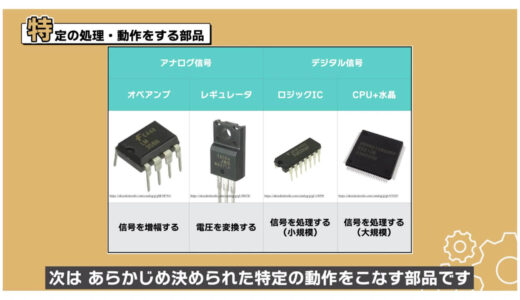
Broadly speaking, components called operational amplifiers and regulators are used to handle analog signals, while logic ICs and CPUs are used to handle digital signals.
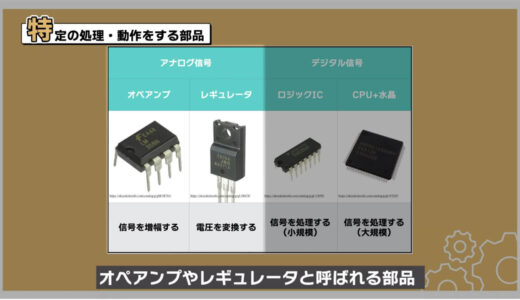 | 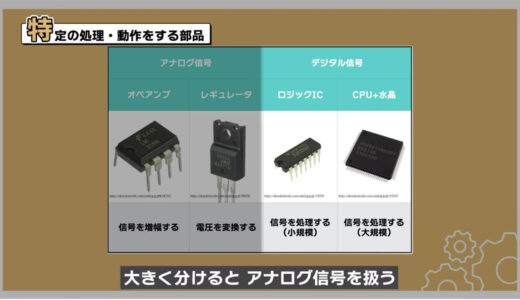 |
Components that supply energy
Next is the so-called heart component that supplies electricity to all electronic components.
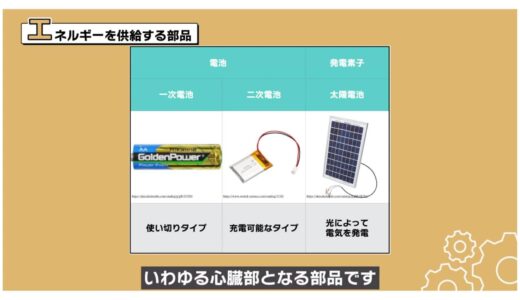
These are of two types: batteries or power generating elements. Batteries are divided into two types: primary batteries, which are used up, and rechargeable batteries, which are rechargeable.
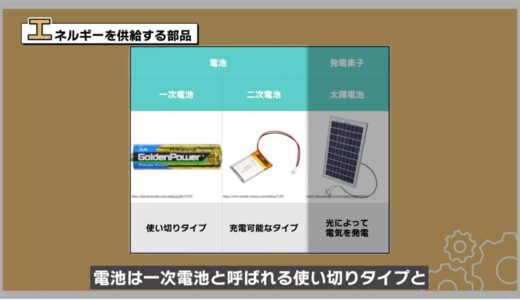
Typical examples of primary batteries are alkaline batteries and secondary batteries are lithium-ion polymer batteries.
Components that make up electronic equipment
When fabricating electronic devices, it is not only the path through which electricity passes that is needed.
In order to ensure that electronic devices are safe, easy to use, and presentable, it is also important to have components that play a supporting role, such as those described below.

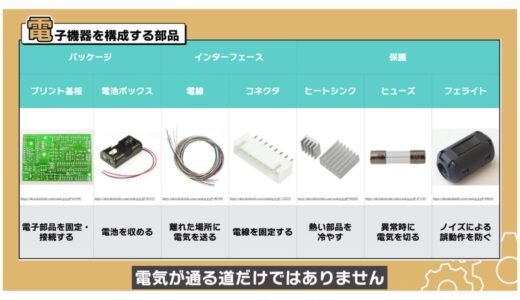
And there are many more types of electronic components than those introduced here.
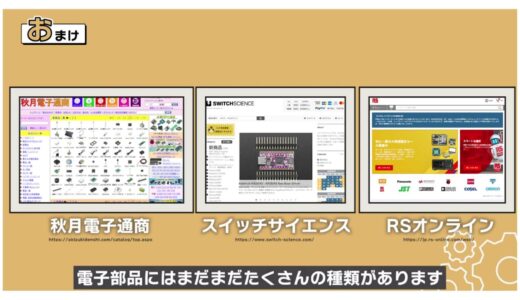
If you are interested, it would be interesting to take a look at the online store for electronic components.
summary
In this article, we have explained the types of electronic components and their respective roles for those who do not understand them.
There are many electronic components other than those introduced in this article, and we hope that you will further increase your knowledge of electronic components and enjoy electronic construction even more.
This site also provides other videos and articles to help beginners learn electronics construction systematically from zero, including explanations of the minimum knowledge and tools they need to acquire.

 Start electronics
Start electronics 


